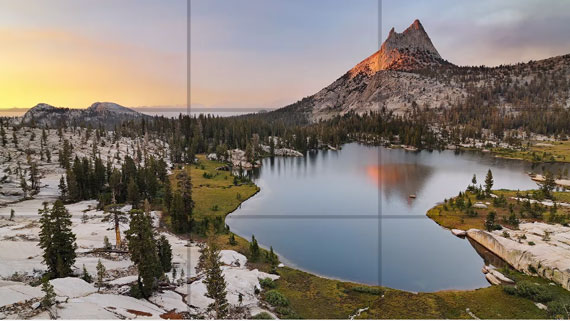The rule of thirds is often spoken of as a hard-and-fast rule: frames should be divided into nine sections, three across and three down, and the most important aspects of an image must appear at the intersections of those lines. While that’s good information, it’s not a necessary restriction, as the video below shows:

As landscape specialist Joshua Cripps explains, the rule of thirds is a great tool for beginner photographers, especially with regards to landscapes. Usually it’s two-thirds land, one-third sky, like this:

And you’d place focal points at the intersections, like this:
But, as Cripps says, the rule is less of a “rule” and more of a way to gauge what’s important in a photo. Land can be a sliver at the bottom to show the expansive sky, or the horizon could be squat in the middle, if both the ground and sky are equally important and beautiful.
“The rule of thirds actually has very little to do with thirds at all, and lots more to do with what you find interesting. So you do have a spectacular sky—and a bland landscape. Then you should give the sky the most of the weight in the photo. That’s you saying, ‘Look at this.’ The more interesting you think something is, the more weight you should give it in your images.”
Like This Article?
Don't Miss The Next One!
Join over 100,000 photographers of all experience levels who receive our free photography tips and articles to stay current:







Leave a Reply